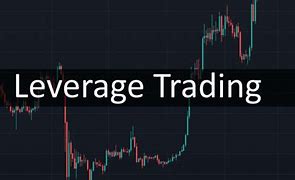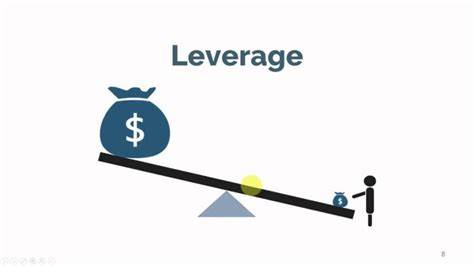
Table of Contents
Introduction
In the fast-moving world of online trading, many new traders come across the term leverage trading. At first glance, it seems like a tantalizing prospect of being able to control a large position with relatively little money. But is it as great as it seems? And more importantly, is it safe for a beginner?
This article aims to break down leverage trading in a simple, beginner-friendly way. Whether your brand new to trading or looking to expand your knowledge, you’ll find clear explanations, honest advice, and a roadmap to understanding whether leverage trading is the right step for you.
What Exactly Is Leverage Trading?

Leverage in its most basic form involves borrowing money to amplify your potential returns on an investment. Instead of only contributing the capital that you already have, you borrow additional funds from a platform or broker to acquire a larger position in a market.
Let’s look at a very simple example:
Assume that you have $100. Using 2x leverage, you can own $200 of an asset. When the asset price goes up 10%, you earn 10% on $200, a $20 profit even though you invested only $100 initially.
Main Points About Leverage:
- Leverage is usually expressed in the form of a ratio like 2x, 5x, 10x, or higher.
- Leverage magnifies both profit and loss.
- Platforms usually require a margin, a deposit that acts as collateral for the borrowed funds.
In short, leverage allows traders to do more with less but with additional risk.
How Does Leverage Trading Work?
When you trade on margin, you’re essentially opening a margin account. Here’s the process:
- Deposit Margin: You deposit some funds (the margin) into your trading account.
- Choose Leverage: You choose how much leverage you want (e.g., 5x).
- Open a Position: You open up a trade five times larger than your deposit.
- Watch Your Trade: Your profit is magnified if the market moves in your favor, and your loss is amplified if it moves against you.
If your trade works too against you, the site may initiate a margin call, and you’ll be asked to add more money so that the trade can continue. If you can’t, your position gets automatically closed, meaning you’ll end up losing all your initial amount.
Why Do Traders Use Leverage?
Leverage has several benefits that can be attractive to both professional and new traders:
- Access to Bigger Positions: You can trade larger sizes with little money.
- Possibility for Higher Profits: Since you are managing a larger position, your profits (if you win the trade) can be significantly higher than trading with your capital.
- Optimal Use of Capital: You can keep part of your capital free for other investments and position yourself with larger amounts in the market.
- Profit Opportunities on Both Upward and Downward Markets: Leverage can be used by traders to profit from both upward (long) and downward (short) markets.
But remember: the higher the leverage, the higher the risk.
Is Leverage Trading Safe for Beginners?
The short answer?
Leverage trading can be very risky for beginners.
Here’s why:
1. Amplified Losses
Just as leverage magnifies your gains, so it also magnifies your losses. A small move against your position can result in a huge loss. Newcomers are sometimes surprised at how quickly their account balance is wiped out.
2. Emotional Pressure
Trading with borrowed money adds emotional stress. You may make rash decisions for fear of losing more than you can afford to lose. This kind of emotional stress can lead to bad decision-making, revenge trading, and greater losses.
3. Advanced Risk Management
Profitable leverage trading demands sound risk management abilities stop-loss placement, position sizing, margin management, and discipline. Such abilities are the types that are gained through experience, not at the onset.
4. Sudden Market Movements
Markets do move fast, especially volatile markets like forex or cryptocurrency. The high leverage can magnify such sudden movements and result in unpredictable outcomes.
Read Also: How to Avoid Common Crypto Scams in the Middle East
The Bright Side: Can Beginners Trade with Leverage Safely?
Although leverage is risky, it does not mean that beginners should never use leverage at all. It just means that you must be cautious and smart about planning.
Following are some rules of thumb on how to use leverage wisely if you’re a beginner:
- Start Small
If you decide to use leverage, start with very low leverage e.g., 2x or even 1.5x. This will allow you to become familiar with how leverage works without putting yourself out too much. - Implement a Harsh Stop-Loss
A stop-loss order will close your position by itself if the price moves against you by some predetermined amount. This will prevent you from enormous losses.
As an example, you may decide that you will never risk more than 1% or 2% of your account on one trade. - Trade Only What You Can Afford to Lose
Never exchange money which you need for essentials (food, utilities, or tuition fees) on trading. Trade money you have which you can simply afford to lose without it affecting your lifestyle. - First Practice, Then Trade
Practice leveraged trading on a demonstration account before actually opening a live one. Trading platforms offer fake trading environments to practice using artificial money to become accustomed to leverage.
Acquiring experience without taking actual money risk is one of the most sensible things a new trader can do. - Prioritize Education
Take time to learn technical analysis, fundamental analysis, risk management, and trading psychology. The more you understand, the better you’ll be prepared to handle the duties of leverage.
Knowledge is power and in leverage trading, it’s also protection.
Common Mistakes Beginners Make with Leverage
Learning from other people’s errors can conserve your time, money, and frustration. Here are some usual errors newcomers commit when they trade with leverage:
- Overleveraging: Using the maximum amount of leverage offered by the platform.
- Risk Management Blindness: Trading without using stop-losses or take-profits.
- Chasing Losses: Double down on a loss, with additional leverage in hopes to recover.
- Not Knowing Market Conditions: Day trading extremely volatile markets without understanding the risks involved.
- Not Having a Trading Plan: Trading on impulse instead of sticking to a well-thought-out plan.
Avoiding these mistakes can greatly enhance your chances of trading successfully and long-term.
Read More: Why Understanding Market Structure Matters for Saudi Crypto Traders
Advantages and Disadvantages of Leverage Trading
Advantages:
- Opportunity to gain high returns with minimal initial investment.
- Optimal use of capital.
- Opportunity to profit from appreciating as well as falling markets.
- Learning advanced trading skills.
Disadvantages:
- Potential for extensive losses, even more than your initial deposit.
- Highly emotional pressure and stress.
- Need for advanced risk management strategies.
- Higher exposure to the market and thus quicker losses.
Understanding both sides of the coin allows you to make better and well-informed decisions about whether leverage trading is appropriate for your goals and risk tolerance.
A Smarter Way Forward
If you are excited about leverage trading’s promise but apprehensive about risks, here’s an encouraging strategy that you can adopt:
- Learn the Fundamentals: Educate yourself in markets, trading strategies, and risk management in detail before capitalizing on leverage.
- Use Demo Accounts: Familiarize yourself with leveraging with fake money until you feel sure.
- Leverage Very Low: Begin at 1.5x or 2x leverage not 10x, 20x, or 50x.
- Take Care of Yourself: Employ stop-losses at all times and never risk more money than you can afford to lose.
- Remain Humble: Remember that trading is a marathon, not a sprint. Patience and persistence always win over shortcuts and risk-gambles.
Remember, successful traders don’t think only about how to make money they think about how to keep their money safe. Safety, patience, and smart planning are your best buddies on this journey.
Conclusion
Leverage trading offers exciting opportunities but with enormous responsibilities. For beginners, it’s advisable to approach leverage with respect, caution, and a firm commitment to learning.
There is no need to be ashamed about taking it slow. Actually, going slow to start out is probably the brightest and most courageous thing you can do. And there is no better place to learn trading skills than with no pressure.
Always remember it’s better to achieve consistent, repeatable growth than to chase risky, fortunate wins and incur unnecessary losses.
By being disciplined, well-informed, and focused, you create the opportunity for a trading journey that is exciting and well-handled. The future is full of possibilities and with the correct attitude, you’re already on the way to success!
